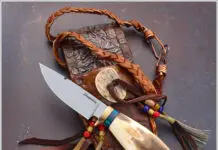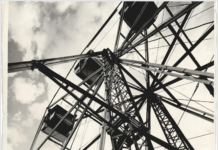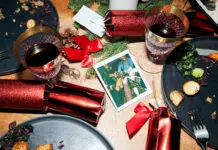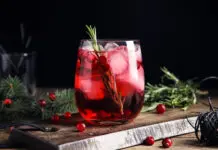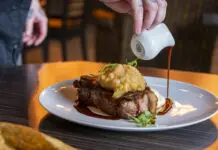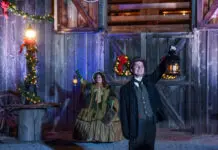Thanksgiving is in a few short days, and the whole gang is coming over and expecting you to prepare a fabulous meal with all of the trimmings. Even if you’re an accomplished cook, this can be a daunting task, especially if you’re entertaining an entire posse of hungry pilgrims. Luckily, a few talented area chefs offer tips, advice and wonderful recipes to make you look like you’ve spent years in culinary school, even if don’t know a baster from a gravy boat.
Before any cooking can start, you need to plan ahead. Once you know what you’re serving, you need a plan to make the whole process easier and give you more time with family and friends. Getting everything prepped ahead – called mise en place – is a vital part of any successful cooking venture.
Tulsa chef Mitch Neely recommends a general time line.
General Timeline
5 days ahead: Buy wine and champagne.
4 days ahead: go to grocery store and buy all ingredients.
3 days ahead: Thaw turkey or any other meat, make cornbread for stuffing, etc.
2 days ahead: Prep and get all mise en place ready, make desserts.
1 day ahead: Start cooking, prep all dishes .
Thanksgiving day: Roast turkey, other meats cook sides, etc.
Chef Neely’s twists on Thanksgiving:
1. Try a themed Thanksgiving, such as Moroccan or Mexican.
2. Roast ham or lamb instead of turkey.
3. Serve buttermilk fried chicken instead of turkey.
4. Barbecue or grill outside (depending on the weather).
5. Serve savory bread pudding instead of stuffing or dressing.
Here are a few tips to ensure that your bird is golden on the outside and fantastically moist and juicy on the inside.
1. Allow turkey to thaw in fridge or in a sink filled with cold water, remembering to change the water often.
2. Once thawed, keep in fridge until ready to use.
3. If brining, turkey can stay in brine up to 24 hours. Any longer than that and the meat may begin to break down.
For more tips on preparing a moist, succulent bird, check out tips from Tulsa Chef Geoffrey van Glabbeek.
The Main Event
Chef Curt Herrmann, chef and instructor at the Culinary Institute of Platt College, offers an alternative to the traditional turkey. For adventurous foodies, a turducken is a deliciously different way to prepare this holiday staple. Prepared in the European style, this rolled roast uses the best of all three birds to create something extra special that’s sure to become a new tradition in your house.
“One of the most important things to remember when making a turducken is to keep everything cold to prevent the fat from separating,” Herrmann says.
Classic European-Style Turducken
1 turkey, skinned and boned, reserving skin
1 duck, skinned and boned, reserving skin
1 chicken, skinned and boned, reserving skin
2 pounds pork butt, cut into small chunks
2 pounds uncooked bacon, chopped
Herbs, dried fruits, rice, etc.
Salt, pepper and other seasonings to taste
1. Remove dark meat and innards from birds, chop and use in filling.
2. Cut breast meat into chunks to use for garnish.
3. Cut open a large garbage bag and lay turkey, duck and chicken skin on bag, creating a bed for the filling. Patch any tears with more skin. Freeze until solid while working on filling.
4. Using a meat grinder or food processor, combine the pork butt, sausage and reserved dark meat and grind or process until mixture becomes well incorporated and homogenous.
5. Stir in any desired herbs, fruit, rice or other desired ingredients and season.
6. Chill filling while working on skin.
7. Remove skin from the freezer and use a sharp knife to trim excess, forming a large rectangle.
8. Spread filling evenly over skin, leaving a two inch margin. The filling should be about ¾ inch thickness.
9. Lay the chunked meat over the filling.
10. Spread any remaining filling over the meat.
11. Starting with a long edge, use the plastic bag to help roll up the meat, just as you would if making sushi, being careful not to roll the bag into the meat.
12. Using butcher’s twine, tie the turducken at even intervals, so that there are no large gaps where filling can leak out.
13. Once tied, roll the turducken back into the garbage bag and tie each end. The finished product will look like a large piece of taffy. Chill until Thanksgiving.
14. When ready to roast, preheat oven to 450 degrees.
15. Place turducken in roasting pan and roast until browned, Reduce oven temp to 250 and continue cooking until internal temp reaches 155 using an instant read thermometer.
16. Remove from oven and allow to rest for 20-30 minutes before slicing.
Side Dishes
As important as main dishes are, the side dishes are really the heart of the meal. Instead of green bean casserole and the usual marshmallow-topped sweet potatoes, start new traditions with these tasty sides.
One of the most popular side dishes this time of year is the stuffing/dressing. For safety’s sake, it is best to bake it outside the bird. Otherwise, by the time the stuffing reaches an internal temp of 165 degrees, the meat may be dried out.
1. Start with this traditional recipe and then customize it to make it our own:
2. Try substituting your favorite veggies and herbs or dried fruits.
3. For a heartier dressing, add about half a pound of cooked and drained sausage – whatever variety you prefer.
4. If you like pumpernickel bread, try substituting it for the cornbread.
Cornbread Dressing
1 (8 inch) pan of cornbread, crumbled
1(1 lb.) loaf French or sourdough cut into 1 inch cubes
1/4 c. bacon drippings
6 tbsp. butter
1 large yellow onion, chopped
4 large celery stalks, chopped
1 can water chestnuts, chopped
5-6 c. chicken broth
2 t. dried sage
4-5 thyme sprigs, stripped
2 tbsp. chopped Italian parsley
Salt and pepper to taste
Preheat oven to 350 degrees. Line two sheet pans with foil. Combine the bread crumbs and spread on pans in a single layer. Toast in oven for 15 minutes or until bread is dry. Transfer to a large bowl.
In a large skillet, combine bacon fat and butter; melt over medium heat. Add onion and celery. Sauté until onion is translucent and celery is softened, about 5 minutes. Stir in water chestnuts. Add this mixture to the bread in the bowl.
Add 4 ½- 5 cups of chicken broth, sage, thyme and parsley; mix well. Add more chicken broth, if needed. Adjust seasoning to taste.
Lightly grease a 13×9 inch pan. Spread dressing evenly in prepared pan. Bake for 45-60 minutes or until heated through and crusty on the top.
Gravy is a mandatory part of the Thanksgiving meal, but it doesn’t have to be complicated or intimidating. Follow these basic directions and then customize it by adding whatever you like, be it oysters giblets or
Instead of making gravy the traditional way by whisking flour into the fat, Chef Herrmann suggests using a cornstarch slurry – a combination of any desired liquid and cornstarch until it is the consistency of heavy cream.
To make simple, but delicious gravy:
1. In a small bowl, whisk together 2 tablespoons of cornstarch and enough liquid to make it like heavy cream.
2. Remove all but about 2-3 tablespoons of drippings from pan.
3. Add approximately 2 cups of turkey stock. Consider using a combination of stock and wine.
4. Bring to a boil, reduce heat and add slurry.
5. Bring back to a simmer and cook until gravy is desired consistency
6. Remove from heat and whisk in a tablespoon or so of cold butter.
Mashed Potatoes
If you’re going to have an unctuous gravy, it would be almost criminal to not have a bowl of creamy potatoes to sop up all that goodness. Whether you prefer you ultra-smooth or smashed and lumpy, here are a few universal tips to make sure they are delicious on their own before smothering them in gravy.
1. After boiling and draining potatoes, return them to the heat briefly until all of the moisture is gone.
2. Warm up milk or cream and butter so that potatoes have a nice, light texture.
3. Mash with skins on for added texture and great flavor
4. Stir in bleu cheese crumbles, bacon bits or anything else you like.
Creamed Corn
from Chef Mitch Neely
12-15 ears fresh corn
2 jalapenos
1 red onion
2 red bell peppers
1 bunch cilantro
1 head roasted garlic (drizzle with olive oil and bake in foil at 400 for 30-45 minutes until golden)
1/4 c. ground cumin
1/4 c. ground coriander
2 tbsp. cayenne
4 c. heavy cream
Salt and pepper to taste
1. Remove husks and silk from corn; roast 15-20 min at 350 until corn begins to brown.
2. Remove from oven, cool, remove corn kernels from husks and save husks. Dice jalapenos, red onions, bell peppers and mince garlic.
3. Pour cream into sauce pot and put corn cobs in cream, turn heat on low and bring to a boil, turn off, cover pot and steep approximately 30 minutes.
4. Sauté corn, jalapenos, red onion, bell peppers and cilantro until soft; strain corn cream, pour corn cream over vegetables, add spices and reduce until thickened, about 10-15 minutes. Add salt and pepper to taste.
Guajillo-Bourbon Cranberry Sauce
from Chef Marcus Vause, Go West Restaurant and Catering Kitchen
2 guajillo chiles rehydrated in hot water for 15 minutes
1 c. yellow onion, diced
1 tsp. fresh-ground cumin
1 tsp. fresh-ground cinnamon
2 c. fresh-squeezed orange juice
1 c. Makers Mark bourbon
1 c. sugar
1 c. fresh cranberries
In a two-quart saucepan, add all ingredients. Bring to a simmer over medium-high heat. Simmer liquid 15-20 minutes or until berries have burst and released their pectin. Remove pan from heat and carefully place in blender. Blend mixture beginning on low speed and then to high until completely smooth. Place pureed cranberry mixture in an empty, clean, sanitized vegetable can and place in refrigerator to set. Unmold when ready to use onto a serving plate.
Chef Michael’s Sweet Potatoes
from Chef Michael Minden, Michael V’s
4 lbs. fresh sweet potatoes
1 small can evaporated milk
3/4 c. brown sugar
6 tbsp. butter, melted
1 tsp. vanilla extract
1 tsp. maple extract
1/2 tsp. cinnamon
2 eggs
1 c. marshmallows
1 c. pecans
1 c. coconut
Preheat oven to 350. Peel and dice potatoes. Cook in a large pot of salted water for 20 min until tender; drain. Place potatoes back into the pot and add milk, sugar, butter, vanilla, maple, cinnamon and egg. Mash until all incorporated and as smooth as you like. Place in a greased 9×13 casserole dish and cover with marshmallows, coconut and pecans. Bake until golden brown and gooey.
Desserts
Chef and pastry instructor, Eric Esau, from the Culinary Institute of Platt College shares a couple of less traditional, but still incredibly scrumptious, sweets that can join Grandma’s pies at the dessert table.
Pumpkin Streusel Coffee Cake
Makes 1 (9 inch) coffee cake
For the cinnamon streusel:
2/3 c. all-purpose flour
1/2 c. packed light brown sugar
1 tsp. ground cinnamon
1/8 tsp. salt
6 tbsp. cold, unsalted butter, cut into small chunks
In a bowl, combine the flour, brown sugar, cinnamon and salt. Add in the butter by using two table knives or your hands to cut into the dry ingredients until the mixture looks like course crumbs. Set aside.
For the cake:
1 1/2 c. all-purpose flour
2 tsp. baking powder
1/2 tsp. baking soda
2 tsp. ground cinnamon
1/2 tsp.ground ginger
1/4 tsp.ground nutmeg
1/8 tsp.ground allspice
1/2 tsp.salt
1/2 c.unsalted butter, room temp
1 c. packed light brown sugar
2 large eggs
1 sp.vanilla extract
1/2 c. pumpkin puree
1/2 c. plan Greek yogurt
For the glaze:
1/2 c. powdered sugar
1/8 t. ground cinnamon
2 tsp. milk
1 tsp. vanilla extract
Preheat oven to 350 degrees. Grease a 9-inch cake pan with cooking spray. Set aside. In a medium bowl, whisk together the flour, baking powder, baking soda, cinnamon, ginger, nutmeg allspice and salt. In the bowl of a stand mixer, beat together the butter and brown sugar on medium high speed until well combined. Beat in the eggs, one at a time, scraping down the sides if the bowl with a rubber spatula. Add the vanilla extract, pumpkin puree and Greek yogurt and mix until just combined. Slowly add in the flour mixture; the batter will be thick. Spread half of the batter into prepared pan, Sprinkle half of the streusel over the batter. Spread remaining over the streusel and top with remaining streusel. Bake until a toothpick inserted into the center of the cake comes out clean, about 45 minutes. Transfer the pan to a wire cooling rack and let cool for a about 15 minutes. Remove thje cake from the pan and let it cool on the rack.
Combine the glaze ingredients while the cake is cooling. Drizzle over the top of the cake. Cut into wedges and serve.
Spiced Apple Dumplings
Makes 4 dumplings
4 Granny Smith apples, cored
1 sheet puff pastry, quartered
4 tbsp. granulated sugar, plus extra for sprinkling
1/4 tsp. ground cinnamon
4 ts0. butter, cut into small cubes
2 oz. red hot candies
Egg Wash (one egg beat with 2 tablespoons of water)
1. Preheat oven to 375. Grease a cookie sheet with pan spray.
2. In a small bowl, mix together the sugar and cinnamon.
3. Place 1 apple, hole up on each piece of puff pastry
4. Place ½ an ounce of red hots in each apple.
5. Place 1 tablespoon of cinnamon and sugar mixture in each apple.
6. Top each apple with one teaspoon of the butter.
7. Gather the four corners of the puff pastry at the top and twist them together. Gently push the twist into the top of the apple.
8. Place on prepared cookie sheet and brush with egg wash.
9. Bake for 30-45 minutes or until pastry is golden brown.
Beverages
So what wine should you serve to go with the big meal? You want wines that will complement not only the meat but all of those delicious side dishes as well. Chef Rex Morris, Chef and Front of the House manager for The Culinary Institute of Platt College recommends the following pairings to go with your feast.
White Wines
Riesling
Gewürztraminer`
Sauvignon Blanc
Pinot Grigio
Red Wines
Pinot Noir
Zinfandel
Shiraz
Rosé
Dessert Wines
Port
Moscato or champagne
Sauterne
Tokay



